AI Pest Detection in Video Feeds
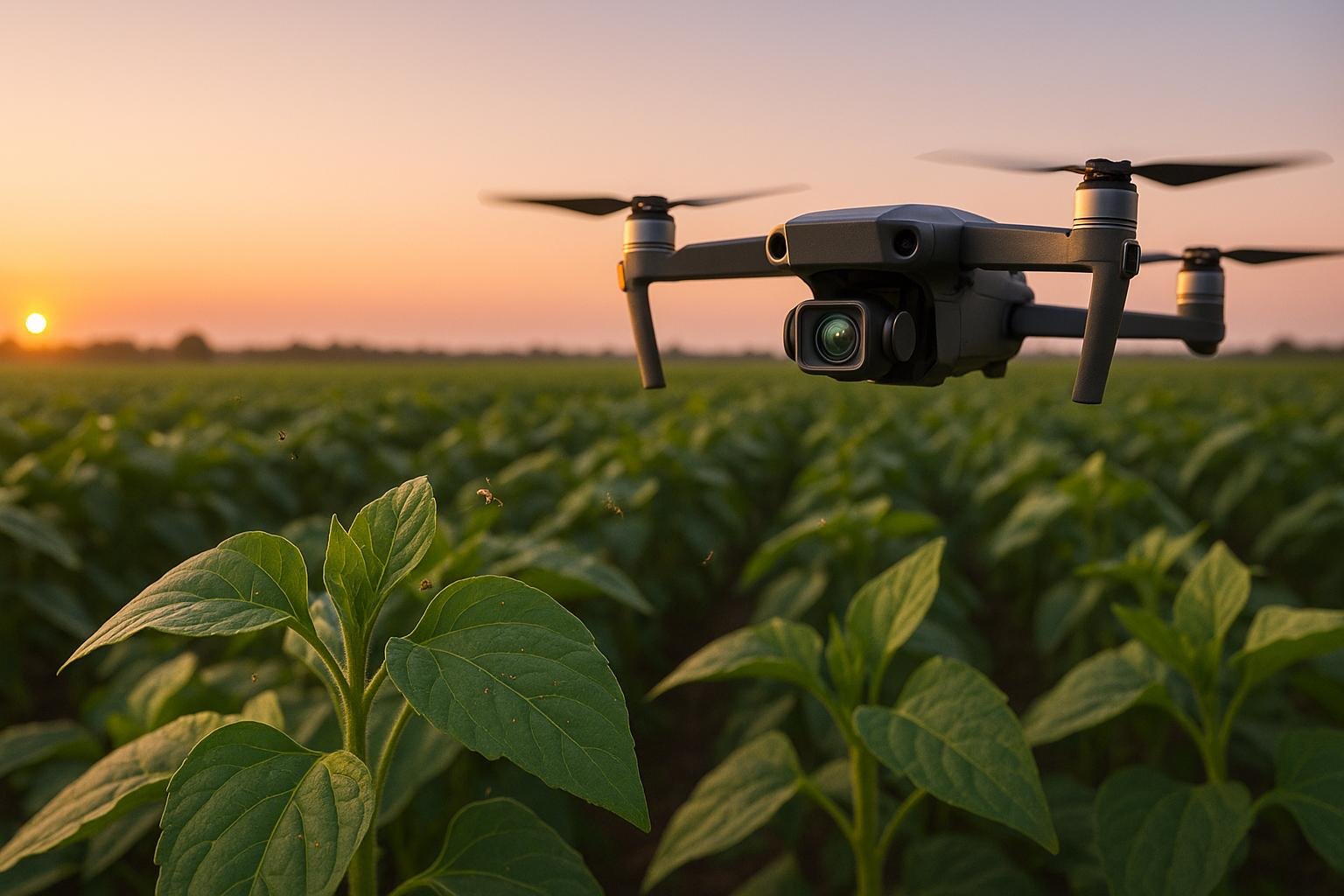
AI pest detection systems analyze video feeds to identify pests, helping farmers and gardeners manage threats more efficiently. These systems use computer vision and machine learning to spot pests in real-time, reducing crop damage and minimizing pesticide use. With detection accuracy often exceeding 95%, they allow for targeted treatments and better crop health.
Key Benefits:
- 24/7 Monitoring: Constant surveillance eliminates the need for manual inspections.
- Reduced Chemical Use: Precision targeting cuts pesticide use by up to 90%.
- Early Detection: Identifies pests before they cause major harm, saving crops and costs.
- Actionable Insights: Provides data-driven recommendations for pest control.
Challenges:
- High Costs: Systems range from $30,000 to $300,000, with monthly operational expenses.
- Data Dependence: Accuracy relies on high-quality, well-annotated datasets.
- Technical Issues: Hardware malfunctions and connectivity problems can disrupt operations.
Future Trends:
- Predictive Analytics: Forecasting pest outbreaks using environmental and historical data.
- Smart Traps: IoT-enabled traps for real-time alerts and better pest tracking.
- Autonomous Systems: Drones and robots for automated pest management.
AI pest detection is transforming pest control by improving accuracy, reducing chemical use, and offering cost-effective solutions for farms and gardens alike.
Tithonus: Real-Time Smart Pest Monitoring Detection System for Urban Farming with Farmbot & YOLOv5

Setting Up an AI Pest Detection System
Installing an AI pest detection system requires the right mix of hardware and software to ensure seamless operation. Some systems are designed for quick setup, with certain traps taking as little as 50 seconds to install [6].
Required Hardware and Software
AI pest detection systems rely on high-definition cameras, edge-computing devices, and IoT sensors for real-time monitoring [5]. A great example is Farmsense’s "FlightSensor", which uses optical units to create "light curtains." These detect insects as they fly through, identifying species with impressive speed and precision [5].
To operate effectively, you'll need pre-trained AI models, user-friendly dashboards, and data labeling tools. Training a model typically requires 500–1,000 well-labeled images to achieve over 80% accuracy, although advanced systems can exceed 95% accuracy even in tough conditions [5]. Cloud integration plays a key role, centralizing insights, syncing dashboards, and enabling real-time alerts when pests are detected.
Costs for these systems vary widely, ranging from $30,000 for basic setups to over $300,000 for advanced configurations. Subscription models are also an option, with pricing starting at $29 per trap per growing season [5][6].
Step-by-Step Installation
Installing an AI pest detection system involves several key steps: setting up sensor nodes, configuring cellular gateways, and running machine learning software [7]. Begin by determining the best camera placements, keeping lighting, pest movement patterns, and coverage in mind. For stationary setups, mount cameras at angles and heights that provide clear views of plant surfaces. If using drones, design flight paths that avoid any coverage gaps.
Adjust the image capture frequency to strike a balance between accuracy and energy efficiency [7]. Calibration is crucial - train your AI model using diverse datasets that include pests photographed under various lighting conditions and from multiple angles. Using localized data can further fine-tune the model to address specific pest types in your region [5].
After calibration, integrate all hardware components with the central processing system. Test the communication between sensors, cameras, and the cloud platform. Depending on the complexity of the area and the system, professional installation may be helpful, though many systems now support do-it-yourself setups. Once installed, connect the system to your garden management platform for enhanced functionality.
Integration with AIGardenPlanner
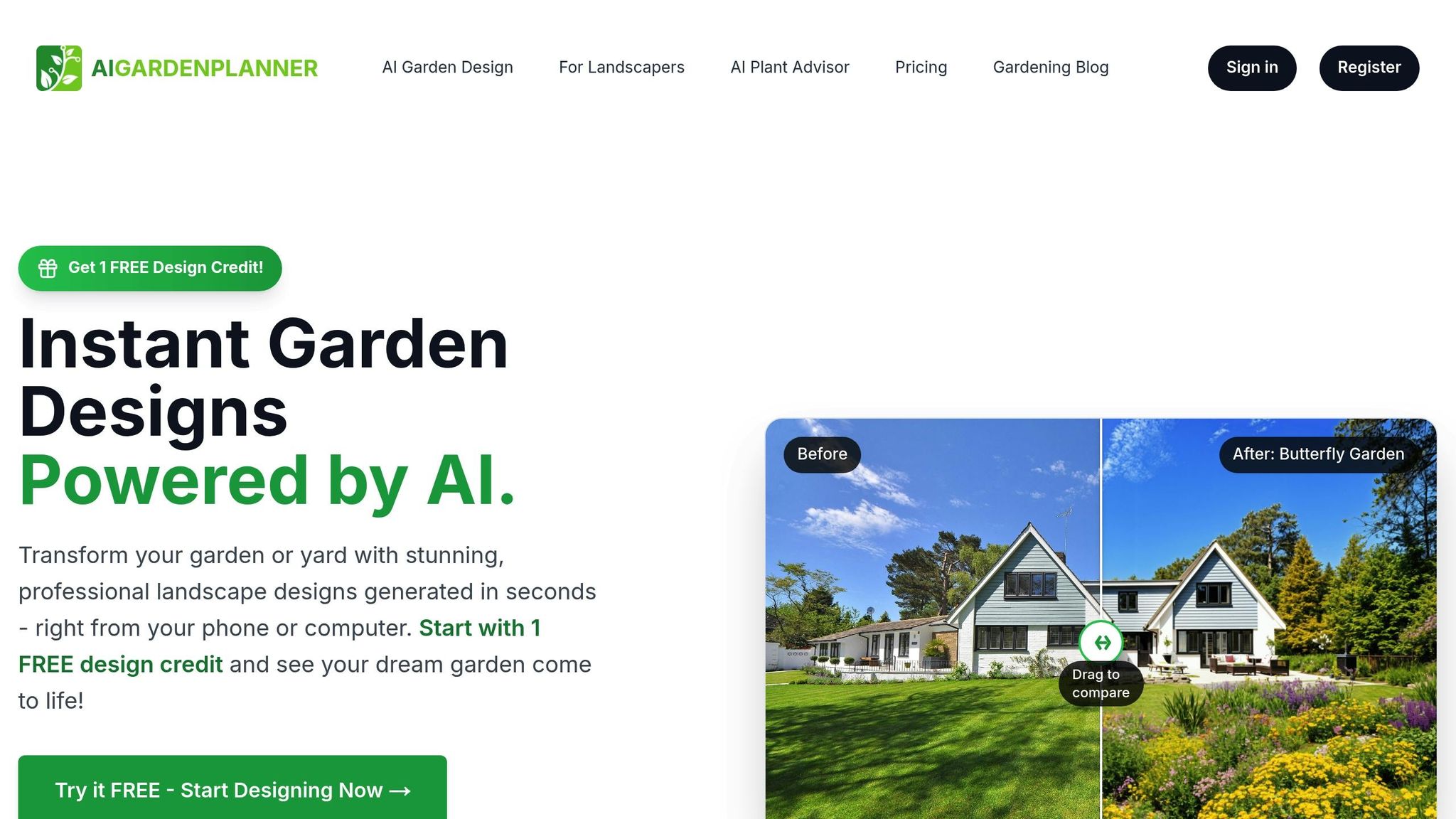
After confirming the system’s functionality, link it to AIGardenPlanner to streamline garden management and pest control. This integration allows you to monitor pest activity over time, identify problem areas in your garden, and receive real-time alerts directly on your AIGardenPlanner dashboard [2].
The system enables targeted treatment, reducing chemical use by up to 90% by focusing only on areas with pest activity [8]. Predictive analytics take it a step further, using historical data and environmental factors to warn of potential infestations before they occur [8]. Over time, this data can guide decisions like selecting pest-resistant plants and optimizing garden layouts.
"Early detection of incidents focuses the treatment area, increases our efficiency, and saves money. The system discovered pests and various plant anomalies numerous times before the IPM employee came in for their weekly examination. Fermata is the guardian angel of our farm!"
– Ben Kissilevich, R&D Manager, GreenKom [2]
To complete the integration, ensure your pest detection system can communicate with AIGardenPlanner’s API. Most modern systems support standard data formats, making it straightforward to sync pest alerts with your garden management interface.
Core Features of AI Pest Detection Systems
Modern AI pest detection systems are reshaping how farmers and gardeners keep an eye on their crops. By blending computer vision, machine learning, and real-time data processing, these systems provide smarter ways to manage pests. Key features like real-time identification, infestation mapping, and actionable insights enable more proactive and efficient pest control.
Real-Time Pest Identification
AI systems excel at instantly identifying pests using advanced computer vision techniques. Object detection pinpoints pests in images, while image classification identifies their species [9]. A standout tool in this space is YOLO (You Only Look Once), a widely-used algorithm for real-time detection. The latest version, YOLO11, offers major advancements, achieving higher precision on the COCO dataset with 22% fewer parameters [9]. Farmers can even train YOLO11 to focus on specific pests [9].
Deep-learning-powered cameras and sensors are another game-changer, with detection accuracy ranging from 70% to 98% in cotton farms [1]. Additionally, instance segmentation technology marks damaged crop areas with precision, helping farmers take targeted action [9].
Tracking and Mapping Infestations
AI systems go beyond detection by mapping pest infestations across fields. These maps detail pest locations and outbreak severity by analyzing weather patterns, pest behavior, and real-time sensor data [10]. For example, Trapview uses AI-driven insect traps with pheromones to lure pests. Cameras inside the traps capture images, which are processed in the cloud to create actionable reports. As Trapview's CEO Matej Štefančič notes:
"We've built the biggest database of pictures of insects in the world, enabling optimal use of AI-powered computer vision." [3]
Other systems, like Farmsense's FlightSensor, use optical sensors and light curtains for real-time tracking [3]. The T-Pest system, developed by TMA Solutions, combines AI, IoT, and GIS technologies to identify seven rice diseases and monitor eight harmful insects. During trials in Bình Định Province, T-Pest analyzed over 1,000 images with accuracy exceeding 80% [12].
Thermal sensors and cameras also play a role, detecting invasive species by analyzing heat signatures, sounds, and movement. Drones equipped with AI can scan entire fields, enabling swift and focused interventions [11]. These tools create detailed maps that guide data-driven pest control strategies.
Actionable Insights
AI pest detection systems take raw data and turn it into practical recommendations. By combining pest monitoring data with weather patterns, GPS inputs, and historical records, these systems enable precise and sustainable pest management [4]. For instance, FarmSense’s platform gathers insect and environmental data in the field, processes it in the cloud, and tailors advice to each farmer’s needs - like helping nut orchard farmers determine the best time to spray.
AI platforms also recommend treatments based on pest type and crop needs, offering options like biological controls, organic pesticides, or site-specific solutions. These targeted methods have been shown to cut herbicide use by up to 90% [1][4]. The Doctor Nabat app uses deep learning on large image datasets to provide accurate diagnoses and treatment plans [3].
Predictive features add another layer of value, allowing farmers to forecast potential pest outbreaks by analyzing environmental and historical data. This helps them act early, minimizing crop damage. Considering pests destroy 20% to 40% of global crop production annually, and with the pest control market projected to hit $32.8 billion by 2028, these AI systems not only protect crops but also reduce chemical use and limit environmental harm [9].
sbb-itb-4d6a8dd
🚀 Ready to Reinvent Your Garden?
Join thousands of homeowners who have transformed their gardens using our AI design tool. Upload one photo to explore endless possibilities.
Get your AI garden designs →Pros and Cons of AI Pest Detection
AI pest detection systems come with their fair share of upsides and challenges. While they promise transformative benefits for farmers and gardeners, there are critical hurdles to consider before diving in.
Advantages of AI Pest Detection
Round-the-Clock Monitoring: AI-powered cameras and sensors provide 24/7 surveillance, cutting down on the need for manual inspections and allowing for quick responses to pest activity [4].
Lower Chemical Use: These systems can significantly reduce the amount of chemicals needed. For instance, Blue River Technology's smart sprayer uses image recognition to differentiate between crops and weeds, spraying only the targeted areas. This approach has helped farmers cut herbicide use by up to 90% [4].
Faster and More Accurate Responses: Traditional methods, like mechanical traps, often take 10 to 14 days to deliver data - too slow for pests with short life cycles. AI systems, on the other hand, enable immediate action, which is crucial for effective pest management [3].
Proven Effectiveness: Real-world implementations back up the reliability of these systems. For example, a large food distribution warehouse reported a 60% drop in pest incidents and a 40% reduction in pesticide use within just six months of adopting AI pest detection [19].
Precise Targeting: AI systems help farmers apply treatments only where and when they’re needed. Cotton farmers, for example, use AI in combination with pheromone traps to manage bollworms, avoiding unnecessary over-spraying [4].
Despite these benefits, AI pest detection systems are not without their drawbacks.
Limitations of AI Systems
High Upfront Costs: The initial investment can be steep, with research and development expenses ranging from $50,000 to $150,000 and infrastructure costs between $30,000 and $100,000. On top of that, monthly operational costs average $8,000 to $12,000. Unsurprisingly, 52% of North American farmers cite cost as a major concern [17][18].
Uncertain ROI: Many farmers hesitate to adopt these systems due to unclear returns. According to McKinsey's 2024 Global Farmer Insights report, only 3% more farmers have started using digital tools since 2022, and 40% remain unsure about the financial benefits [17].
Data and Accuracy Issues: AI systems rely heavily on high-quality data, but problems like incomplete datasets, annotation errors, and algorithmic bias can undermine their effectiveness. A recent IDC survey revealed that 28% of AI/ML initiatives fail, often due to these data challenges [14].
Technical Barriers: Implementing AI systems can lead to operational disruptions. Issues like hardware malfunctions, connectivity problems, and difficulties in distinguishing objects in complex images can significantly impact performance.
Dependence on Data Quality: The effectiveness of these systems is only as good as the data they’re trained on. Poor-quality or insufficient data can severely limit their capabilities [15].
These obstacles underscore the importance of carefully weighing the pros and cons before investing in AI pest detection systems.
Comparison Table
| Aspect | Advantages | Limitations |
|---|---|---|
| Monitoring | 24/7 continuous surveillance | High power consumption and network dependencies |
| Chemical Usage | Up to 90% reduction in herbicides | Requires upfront investment ($30,000–$150,000) |
| Response Time | Instant detection and action | 28% of AI/ML initiatives fail due to technical issues |
| Accuracy | 60% reduction in pest incidents | Dataset limitations and algorithmic bias |
| Cost Efficiency | Long-term savings on labor and chemicals | Monthly overhead costs of $8,000–$12,000 |
| Precision | Treatments applied only where needed | Struggles with detecting small, dense objects |
| Scalability | Covers large areas simultaneously | ROI concerns for 40% of North American farmers |
Maintaining AI Pest Detection Systems and Future Trends
To keep your AI pest detection system functioning effectively, regular attention to both hardware and software is essential. Proper maintenance ensures the system operates at its best.
Routine Maintenance Tips
Camera and Sensor Cleaning
Environmental factors like dust, moisture, and weather can affect image quality, potentially causing missed detections or false alarms. Clean camera lenses weekly with a microfiber cloth and an appropriate cleaning solution. This is especially important for outdoor cameras exposed to rain, snow, or high humidity.
Software Updates
Updating your software regularly ensures you’re benefiting from the latest improvements in algorithms and security. Check for firmware updates monthly, ideally during times when system usage is low.
System Calibration
Seasonal changes can impact the accuracy of your system. Calibrate cameras and sensors every three months to maintain precision in detection.
Human Oversight
Even advanced AI systems need human monitoring. Regularly review detection logs to ensure the system is functioning as expected and to identify areas for improvement.
Model Retraining
Pest behavior evolves with seasonal shifts and the emergence of new species. Retrain your AI models with updated data every six months to keep the system accurate and effective.
By following these steps, you can ensure your AI pest detection system remains reliable and ready for future advancements.
Data Privacy Considerations
Maintaining the integrity of collected data is just as important as hardware and software upkeep. AI pest detection systems, particularly those using video surveillance, gather large amounts of visual data, making privacy a critical concern. Complying with U.S. privacy laws requires robust data protection measures.
Data Storage Security
Store video data on secure, encrypted servers with multi-factor authentication. Implement strict access controls to ensure only authorized personnel can view or manage the data. Regular backups and detailed access logs further enhance security.
Retention Policies
Define clear rules for how long video data is kept - typically between 30 and 90 days for pest detection. Automate the deletion of older footage unless it’s needed for analysis or legal purposes.
Third-Party Integrations
If your system connects to external platforms, verify that these services meet your data protection standards. For example, when integrating with platforms like AIGardenPlanner, ensure they have proper security agreements in place.
Future Developments in AI Pest Detection
The field of AI pest detection is evolving rapidly, with new technologies poised to make pest management more efficient, accurate, and accessible.
Predictive Analytics
AI-powered tools are already enabling predictive analytics to spot infestation trends early. By 2025, it’s estimated that over 60% of large farms globally will adopt AI-driven crop management systems. This technology could boost global crop yields by as much as 20% [20][22].
Smart Traps and IoT Integration
Smart traps equipped with IoT sensors provide real-time alerts, reducing unnecessary technician visits and improving response times. Research shows these systems can lower pesticide use while enhancing detection accuracy [20].
Autonomous Systems
Drones and robots are being deployed for rapid field surveillance. These autonomous systems are expected to eventually manage pest control with minimal human involvement, identifying and addressing issues on their own [13].
One standout example is the collaboration between Semios and Google, where predictive modeling helped almond growers reduce a specific moth population by over 1.5 billion, improving both productivity and sustainability [21].
Enhanced Integration Capabilities
Future AI systems are likely to integrate seamlessly with platforms like AIGardenPlanner. This means pest management strategies can be coordinated with factors like garden layout, plant types, and local climate conditions.
Accessible AI Platforms
As AI technology becomes more affordable, advanced pest detection tools will be within reach for smaller farms, home gardeners, and small-scale operations. This broader accessibility can reshape pest management practices across various scales [21].
AI also supports eco-friendly pest control by reducing the need for chemical pesticides and promoting alternatives like trapping or natural deterrents [13].
These advancements signal a shift toward smarter, more integrated, and environmentally conscious pest management solutions that benefit operations of all sizes.
Conclusion
AI-driven pest detection in video feeds is reshaping pest management for gardeners and landscapers, tackling one of agriculture’s biggest challenges. Pests are responsible for up to 40% of global crop losses and contribute to around $70 billion in damages annually [3]. By offering faster, more accurate, and cost-efficient solutions, this technology is redefining how pest control strategies are approached.
Real-time monitoring is a game-changer. Unlike traditional methods that rely on periodic inspections and often result in delays, AI provides constant 24/7 surveillance. This capability ensures instant detection and alerts, a critical advantage as insect infestations are expected to rise by 36% by 2050 [3]. The speed and precision of AI systems allow for quicker responses, reducing the risk of widespread damage.
Accuracy is another key strength. Advanced AI models now achieve up to 96% accuracy in identifying pests, enabling targeted treatments that significantly reduce herbicide use - by as much as 90% [16][4]. This precision not only minimizes chemical usage but also improves the effectiveness of pest control efforts.
The economic benefits are equally compelling. AI-powered systems have the potential to save farmers up to $2.5 billion annually by reducing losses and improving productivity [23]. For individual gardeners or landscapers, the financial advantages come from lower chemical costs, improved yields, and reduced labor requirements.
Environmental gains cannot be overlooked. By applying pesticides only where they’re needed, AI systems help preserve beneficial insects, protect soil health, and reduce the risk of pests developing resistance. These advancements align with the growing emphasis on sustainable and data-driven pest control methods [20].
For operations of all sizes - whether a backyard garden or a sprawling commercial landscape - AI pest detection offers scalable solutions. The technology adapts to specific needs, providing consistent monitoring and actionable insights regardless of the scale.
Integration with tools like AIGardenPlanner further enhances its value. By combining pest detection data with garden design, plant selection, and climate insights, gardeners can achieve smarter, more holistic management of their landscapes. This approach addresses all aspects of plant health, creating a well-rounded strategy for garden care.
As AI continues to evolve, bringing advancements in predictive analytics, autonomous systems, and seamless integration, pest detection technology will become even more accessible and effective. This shift marks a major step forward in how we care for our gardens and landscapes, offering a proactive and intelligent way to protect and nurture plant life.
FAQs
How do AI pest detection systems help reduce pesticide use in gardening and farming?
AI-driven pest detection systems are changing the way pesticides are used by pinpointing pest locations with accuracy. Rather than blanket-spraying chemicals over large areas, these systems allow pesticides to be applied only where pests are actually present. This approach drastically reduces the amount of chemicals used.
Another advantage is their ability to forecast pest outbreaks early. This gives farmers and gardeners the opportunity to take preventative measures, avoiding the need for large-scale pesticide applications. By integrating AI into pest management, crops and plants can be safeguarded while reducing the impact on the surrounding ecosystem.
What challenges and costs should I consider when setting up an AI pest detection system?
Setting up an AI pest detection system isn’t without its obstacles, and there are some costs and considerations to keep in mind. One of the primary challenges is the upfront cost. Advanced AI tools and specialized equipment can be pricey, which might pose a financial strain, especially for smaller farms.
Another key factor is the technical knowledge required to install and maintain these systems. Without proper expertise, managing the setup or troubleshooting issues can become a daunting task. Additionally, the system depends heavily on reliable infrastructure, such as a stable internet connection, to handle real-time video analysis effectively. Environmental conditions, like poor lighting or extreme weather, can also impact how accurately the system performs.
That said, while these challenges are real, the long-term advantages - such as better pest management and reduced crop losses - make these systems an option worth considering for many in agriculture.
How can AI pest detection systems work with tools like AIGardenPlanner to improve garden management?
AI-powered pest detection systems are transforming garden care by using real-time video analysis to spot pests with speed and precision. Equipped with cutting-edge sensors, cameras, and machine learning, these systems can identify pest activity early, allowing for timely action and more precise treatments.
When paired with tools like AIGardenPlanner, these systems offer insights that align seamlessly with garden layouts and upkeep strategies. They can pinpoint areas prone to pests and even forecast potential infestations. This makes it easier to design robust, pest-resistant gardens while encouraging eco-friendly gardening methods. Together, these tools simplify pest management and support healthier, more personalized garden spaces.
🎨 Visualize Your Dream Garden Today!
Transform any outdoor space into a professional landscape design in minutes. Just upload a photo, choose your style, and let our AI do the rest.
Start your garden transformation now →Related posts
Related Articles
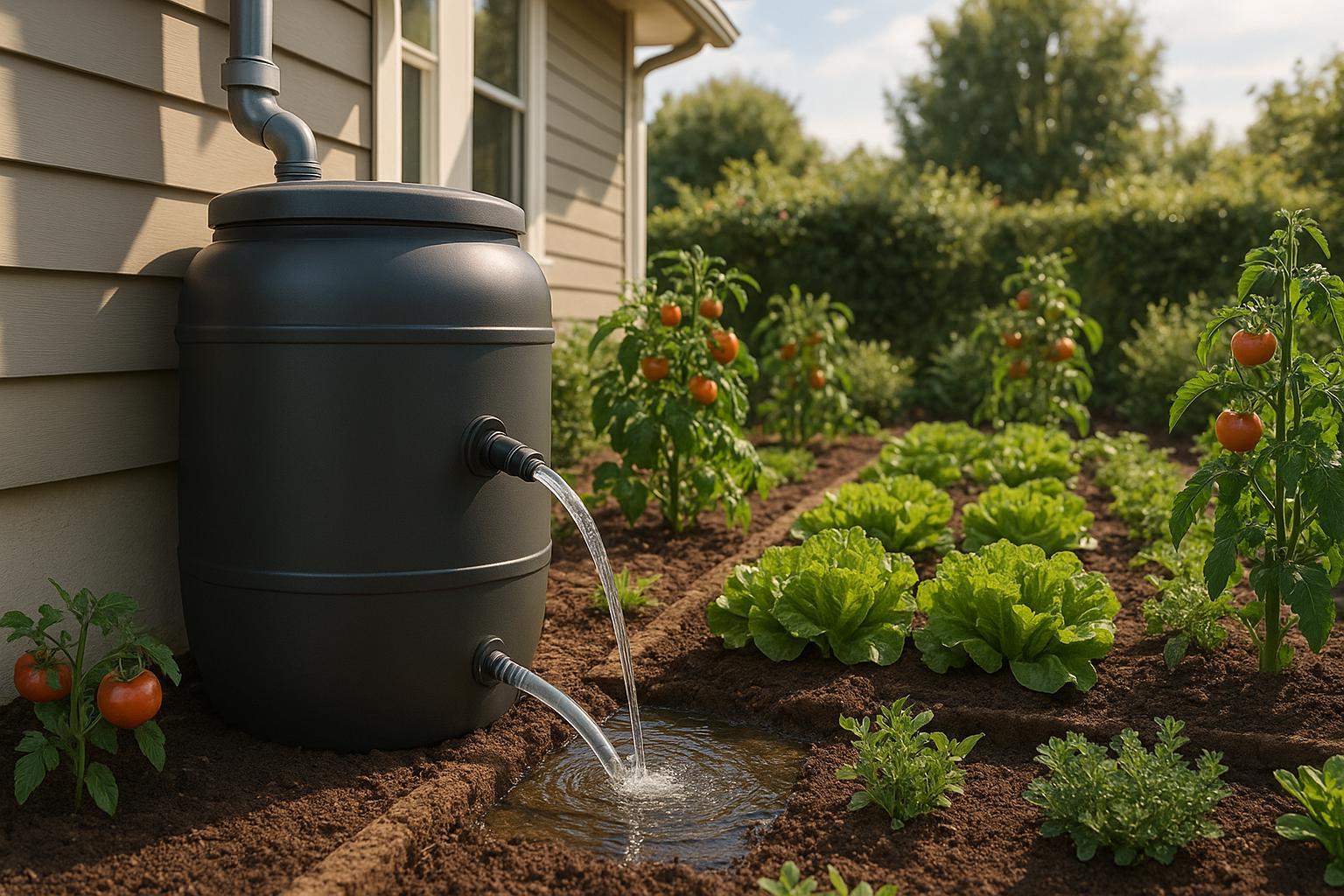
Ultimate Guide to Rainwater Filtration for Gardens
Learn how to implement an effective rainwater filtration system for your garden, enhancing plant growth while conserving water and reducing costs.
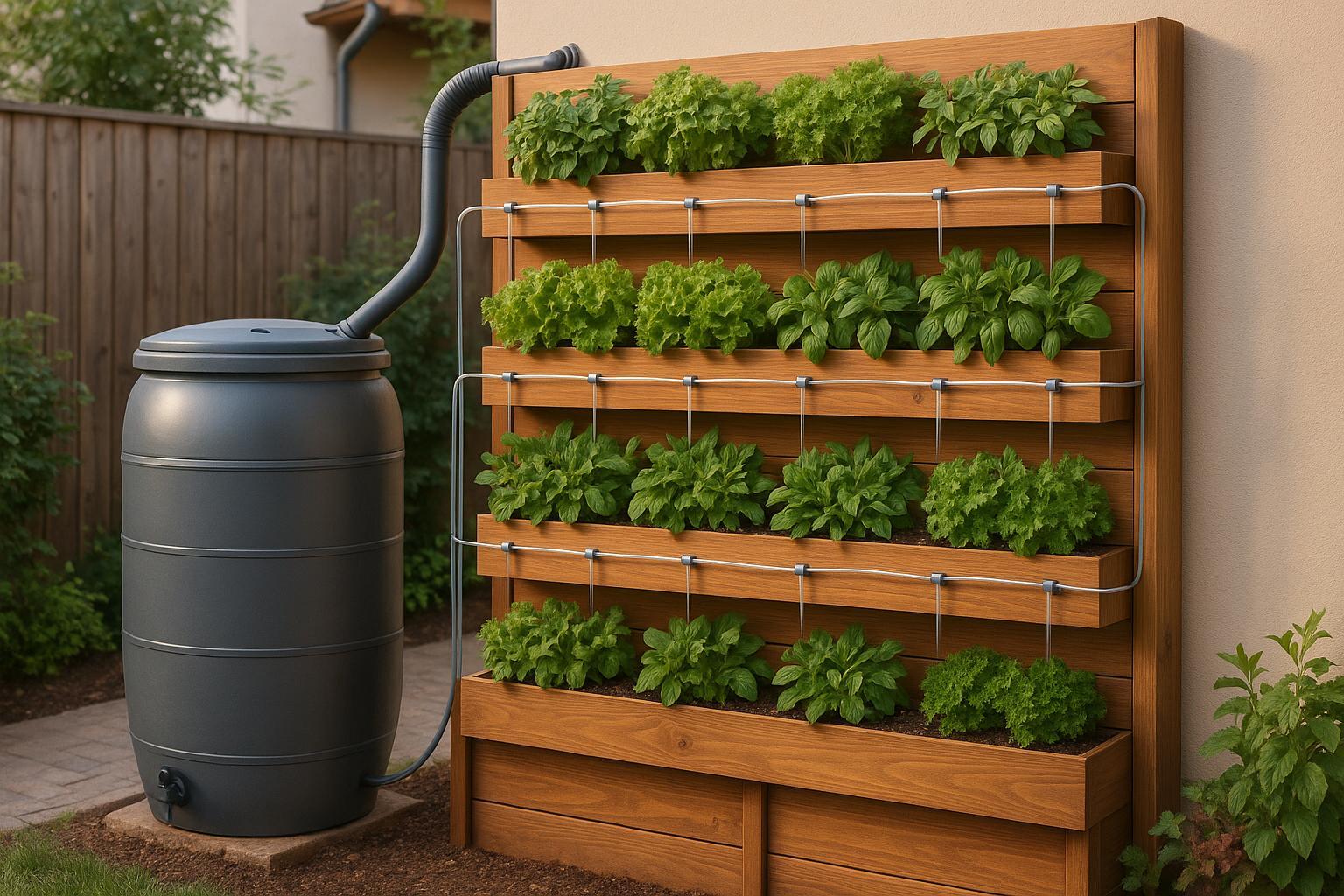
DIY Rainwater Systems for Vertical Gardens
Learn to create a DIY rainwater system for your vertical garden to save water and promote healthier plant growth with low-cost solutions.
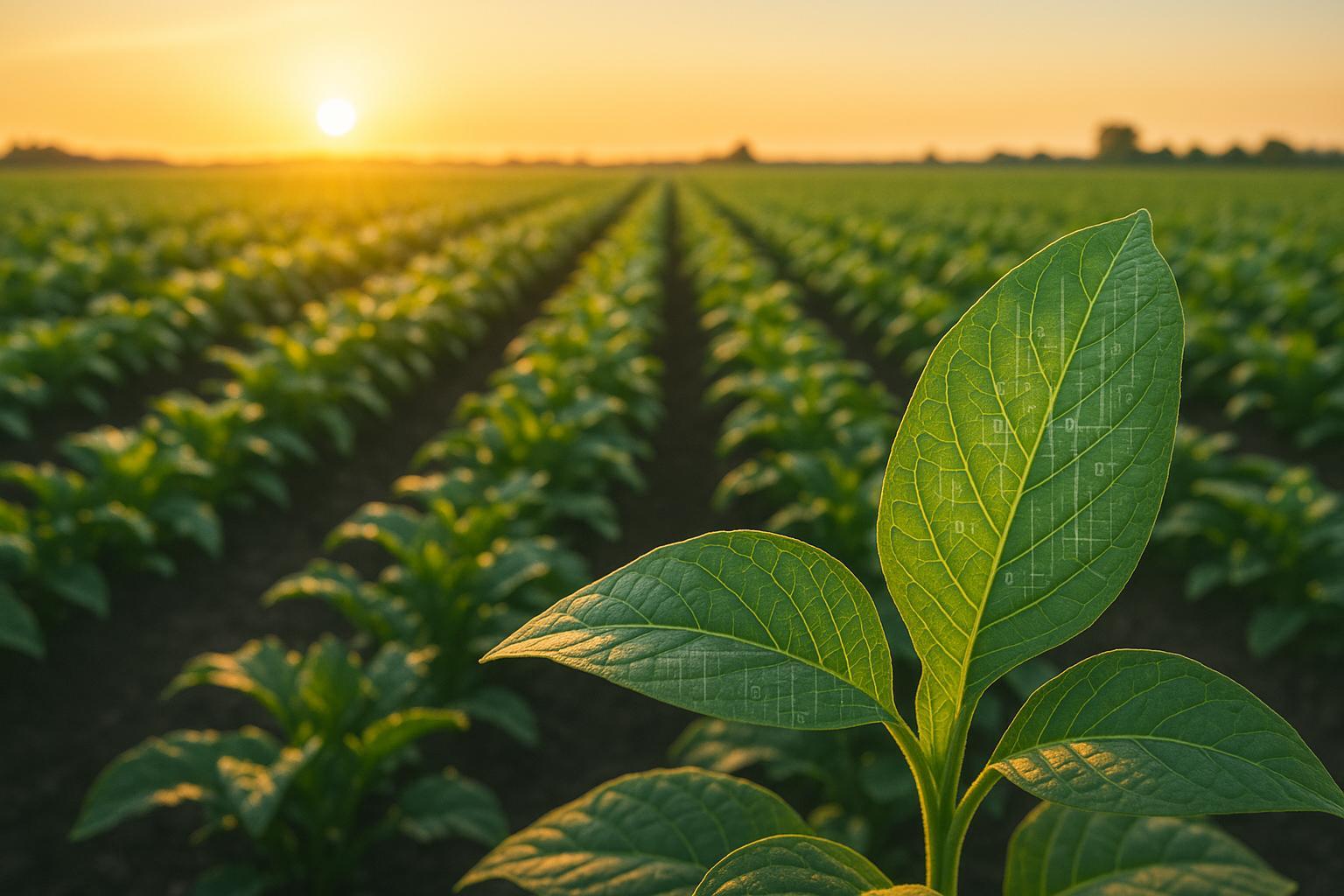
AI in Plant Breeding: Disease Resistance Insights
Explore how AI revolutionizes plant breeding, enhancing disease resistance and accelerating the development of resilient crops.

How AI Soil Sensors Monitor Moisture and Nutrients
Explore how AI soil sensors enhance farming efficiency by monitoring moisture and nutrients, optimizing irrigation, and boosting crop yields.
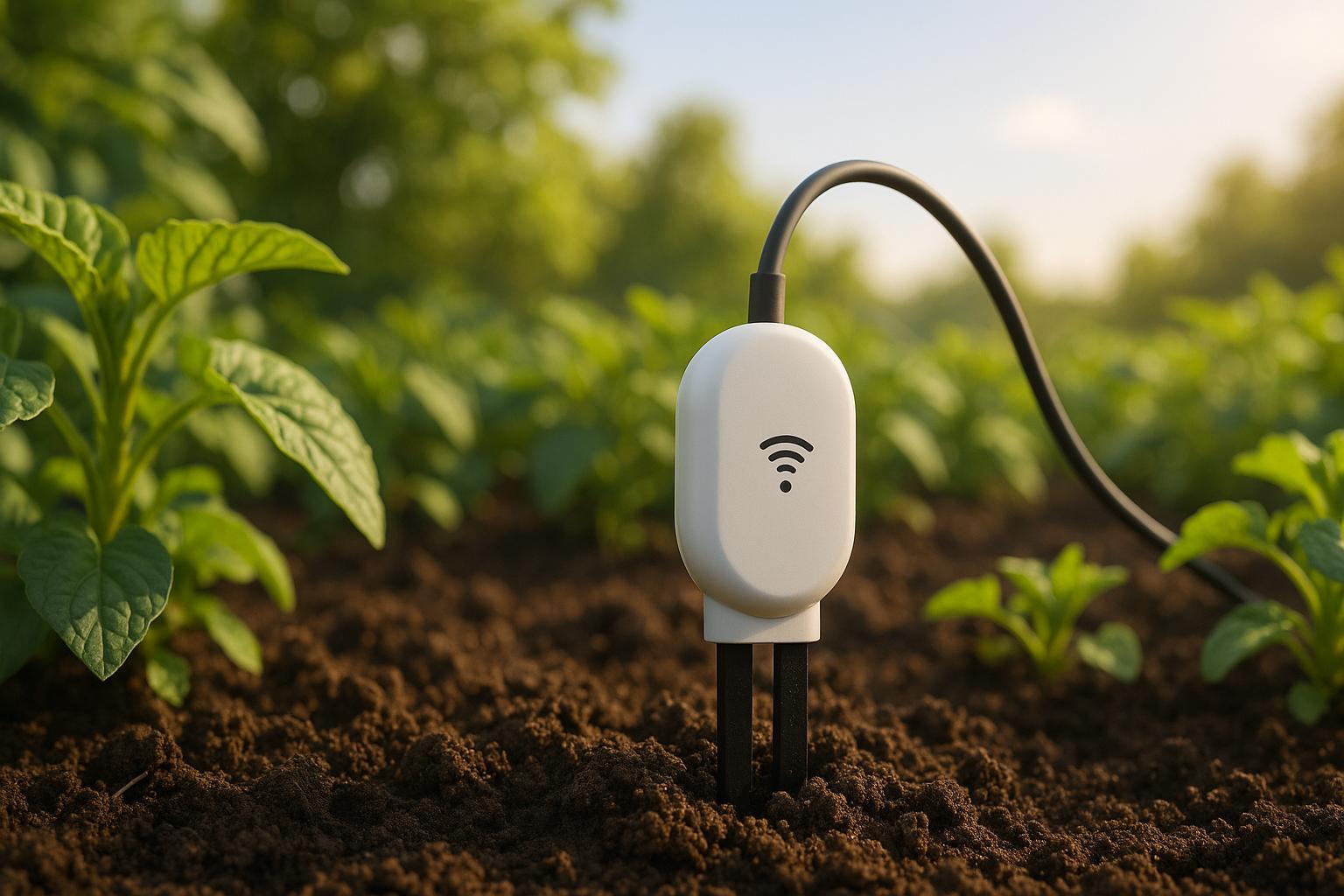
How Soil Sensors Work with Cloud Irrigation
Explore how soil sensors and cloud irrigation systems optimize water usage, enhance plant health, and simplify garden management.
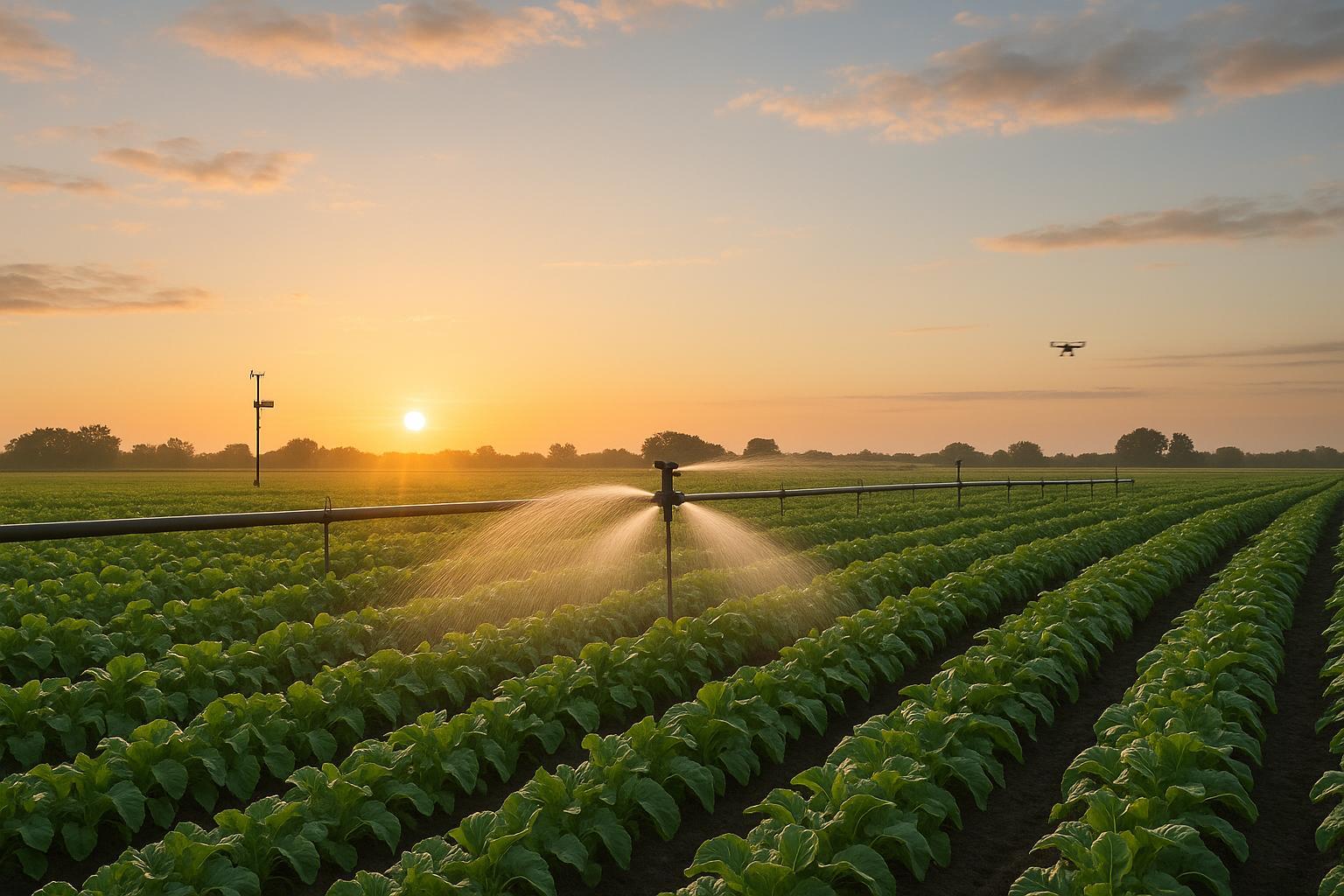
How AI Predicts Weather for Smarter Irrigation
Explore how AI-driven weather predictions optimize irrigation systems, enhancing water efficiency, crop yields, and cost savings for farmers.